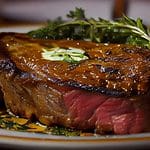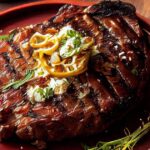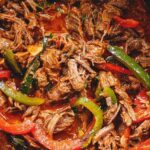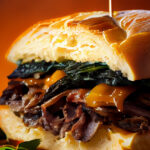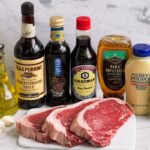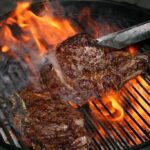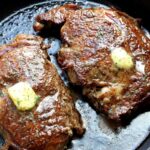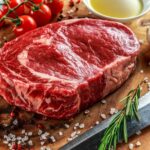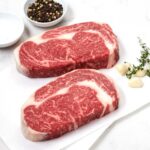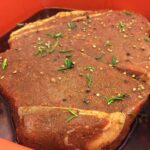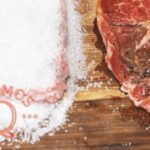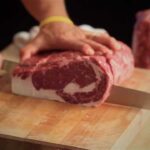How to Cook a Ribeye Steak Without a Cast Iron Skillet
Are you a fan of juicy, tender ribeye steak but don’t have a cast iron skillet? Don’t worry, it’s still possible to achieve the perfect steak without one. In this article, we’ll walk you through the best way to cook a ribeye steak without a cast iron skillet, using everything from a frying pan to a baking sheet. Whether you prefer your steak medium-rare or well-done, we’ve got you covered with tips on cooking time, temperature, and the best cooking methods to use. So grab your favorite steak cuts, a meat thermometer, and let’s get cooking!
Alternative Cooking Tools and Methods
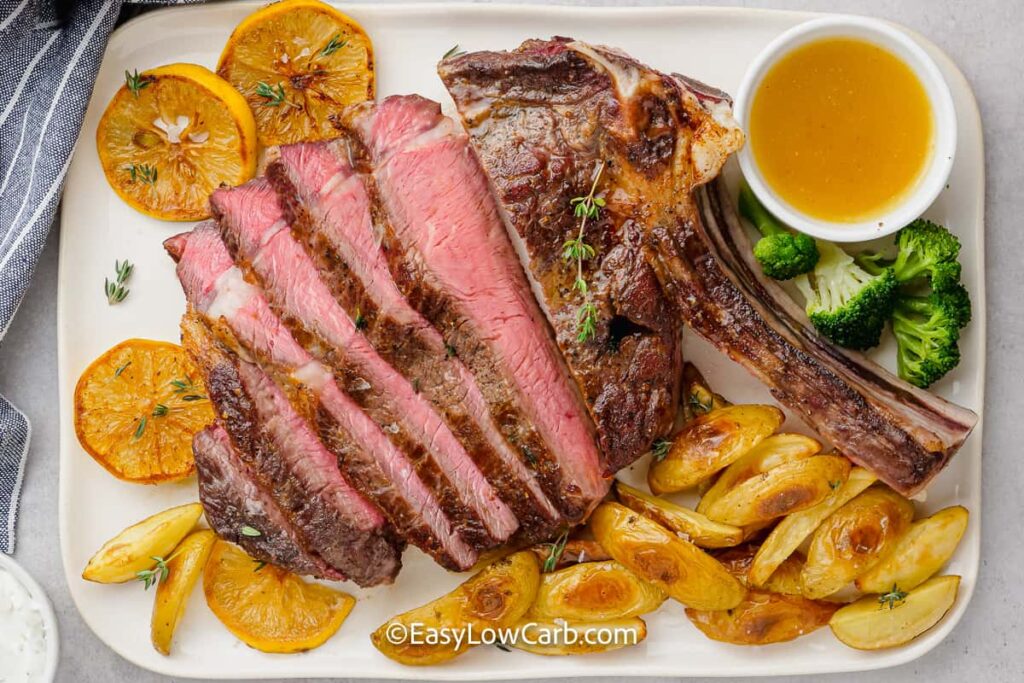
While a cast iron skillet is a classic choice for cooking steak, there are plenty of other options available. Here are some tools and methods to consider when cooking a ribeye steak without a cast iron skillet:
- Frying pans and baking sheets: If you have a frying pan or baking sheet with a smooth surface, these can be great alternatives for cooking steak. Frying pans tend to heat up quickly, which is good for achieving a nice sear on the outside of the steak. Baking sheets are a good choice if you want to cook the steak in the oven, as they allow heat to circulate around the steak more evenly. Just be sure to use a pan or sheet with a smooth surface, as one with a lot of texture could stick to the steak.
- Alternative cast iron cookware: While you may not have a traditional cast iron skillet, there are other types of cast iron cookware that can work just as well. Cast iron pans and griddles have a smooth surface and can withstand high heat, making them a good choice for cooking steak. Just be sure to heat them up gradually to prevent the steak from sticking.
- Meat thermometers: A meat thermometer is a crucial tool for cooking the perfect steak. It allows you to monitor the internal temperature of the steak as it cooks, ensuring that it is cooked to your desired level of doneness. There are two main types of meat thermometers: instant-read and leave-in. Instant-read thermometers can be inserted into the steak and give a reading within seconds, while leave-in thermometers remain in the steak while it cooks and give a continuous reading.
- Other helpful tools: There are a few other tools that can be helpful when cooking steak without a cast iron skillet. Paper towels can be used to pat the steak dry before cooking, which helps to achieve a better sear. Aluminum foil can be used to create a makeshift wire rack, which allows heat to circulate around the steak and helps to prevent it from getting soggy. And a cutting board is essential for slicing and serving the steak once it’s cooked.
Selecting and Preparing the Perfect Steak
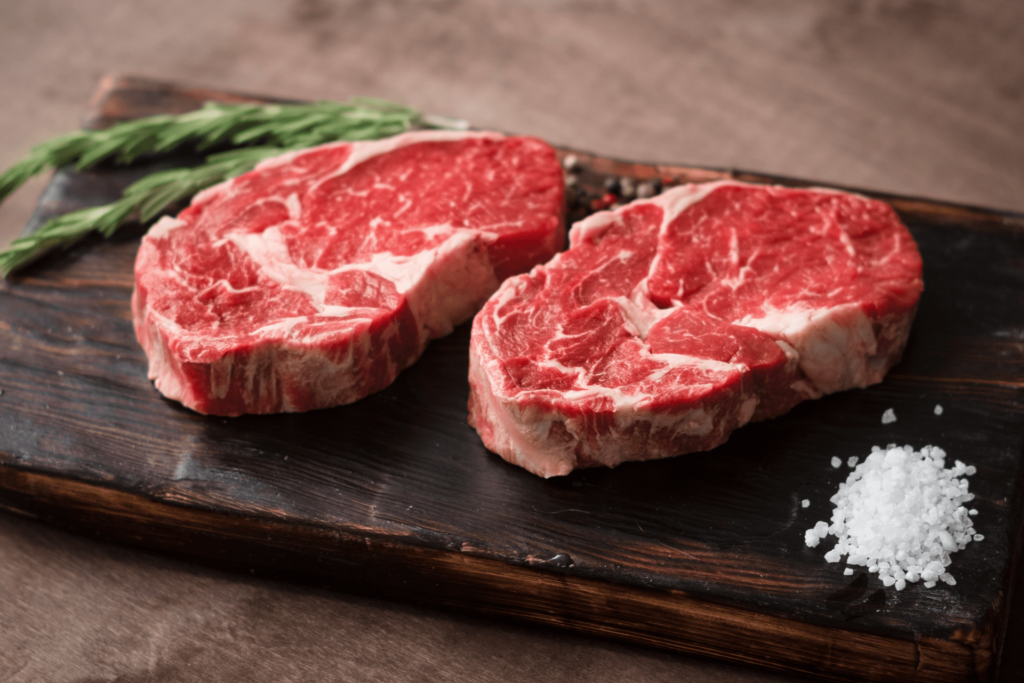
When it comes to selecting the right cut of steak, there are a few things to consider. Ribeye steak is a popular choice for its rich flavor and tender texture, but there are other cuts to choose from as well. Filet mignon, new york strip steak, and skirt steak are all good options that offer their own unique flavors and textures. Just be sure to choose a good quality steak from a reputable source, as the quality of the meat can make a big difference in the final result.
Once you’ve selected your steak, it’s important to prepare it properly before cooking. First, bring the steak to room temperature by letting it sit out for about an hour before cooking. This helps the steak cook more evenly and prevents it from
getting overcooked on the outside while the inside is still cold. Next, season the steak with a little bit of black pepper and kosher salt. You can also add a pat of butter or some compound butter for extra flavor. If the steak has excess moisture on it, pat it dry with a paper towel to help achieve a better sear.
Techniques for Achieving the Perfect Sear and Finish
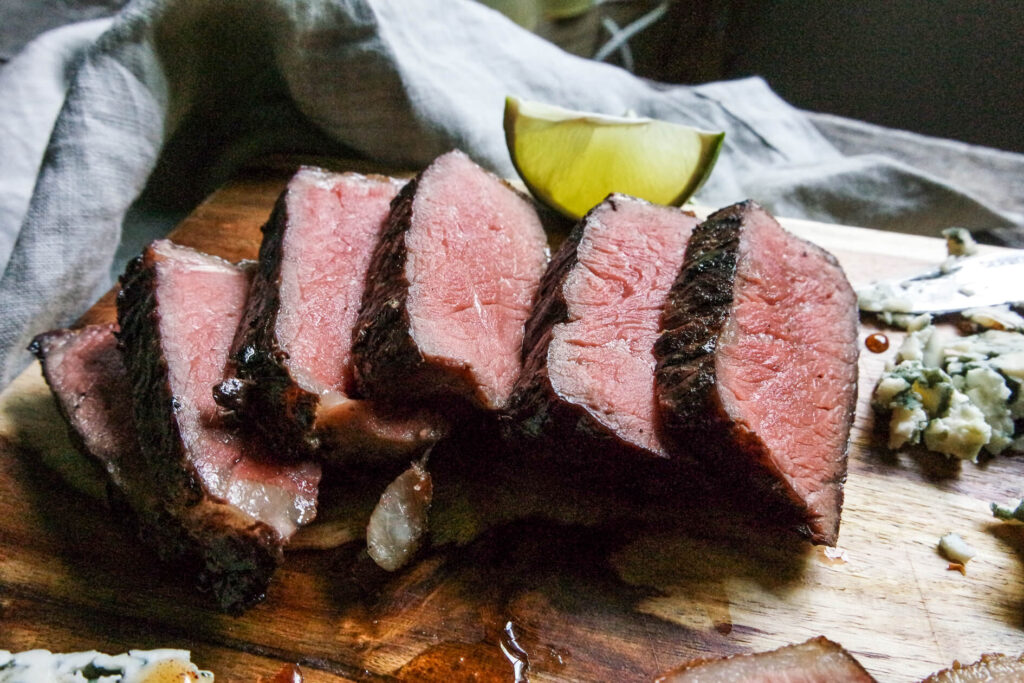
Now that your steak is prepared and your cooking tools are ready, it’s time to start cooking! Here are some tips for achieving the perfect sear and finish on your ribeye steak:
- Heat and cooking time: The key to a good sear is heat. A medium-high heat is usually a good starting point, as it allows the steak to cook quickly without burning. If you prefer your steak medium-rare, aim for a cook time of 3-4 minutes on each side. For a medium steak, cook for 5-10 minutes on each side. And for a well-done steak, cook for 2-3 minutes on each side. Keep in mind that cooking times will vary based on the thickness of the steak and the heat of your cooking surface, so it’s always a good idea to use a meat thermometer to ensure the internal temperature reaches your desired level of doneness.
- Searing and finishing techniques: There are a few different techniques you can use to achieve the perfect sear and finish on your steak. One popular method is the reverse sear technique, which involves cooking the steak in the oven first and then finishing it off on the stovetop. This allows the steak to cook evenly and helps to prevent it from getting overcooked on the outside. If you prefer a more traditional sear, start by heating a hot skillet or pan on the stovetop and adding a little bit of oil to the pan. Place the steak in the pan and sear it for 3-4 minutes on each side, or until it reaches your desired level of doneness. Once the steak is cooked, let it rest for a few minutes before slicing and serving. This allows the juices to redistribute and helps to prevent the steak from drying out.
Timing the Cook for the Perfect Steak
Timing is crucial when it comes to cooking the perfect steak. Here are a few tips to keep in mind as you plan your cook:
- Cook times: As mentioned earlier, cook times will vary based on the thickness of the steak and the level of doneness you prefer. A good rule of thumb is to allow about 3-4 minutes of cook time on each side for a medium-rare steak, 5-10 minutes for a medium steak, and 2-3 minutes for a well-done steak. Keep in mind that these are just general guidelines and that the actual cook time may be longer or shorter depending on the heat of your cooking surface and the thickness of the steak.
- Internal temperatures: A meat thermometer is the best way to ensure that your steak is cooked to your desired level of doneness. For a medium-rare steak, the internal temperature should reach about 145°F. For a medium steak, aim for a temperature of about 160°F. And for a well-done steak, the internal temperature should be at least 170°F.
- Steak rest: Once the steak is cooked, it’s important to let it rest for a few minutes before slicing and serving. This allows the juices to redistribute and helps to prevent the steak from drying out. The thicker the steak, the longer it will need to rest. A thick-cut steak may need to rest for 5-10 minutes, while a thinner steak may only need a few minutes.
By following these tips and techniques,you can easily cook a delicious ribeye steak without a cast iron skillet. Whether you use a frying pan, baking sheet, or cast iron cookware, you can achieve a juicy, tender steak with the perfect sear and finish. Just be sure to choose a good quality steak, prepare it properly, and use the right cooking techniques to get the best results. And don’t forget to use a meat thermometer to ensure that your steak is cooked to the perfect level of doneness.
With a little bit of practice and the right tools, you’ll be a pro at cooking ribeye steak without a cast iron skillet in no time!
Additional tips and resource
One of the best things about cooking ribeye steak is the versatility of the dish. Whether you prefer your steak thick or thin, well-done or medium-rare, there’s a cooking method and recipe to suit your tastes. For example, if you have a thick steak and want to achieve a crispy crust, a cast-iron skillet may be the best choice. Simply heat the skillet on the stovetop over medium-high heat, add a little bit of olive oil, and sear the steak for 3-4 minutes on each side.
Or, if you prefer a thinner steak with a nice crust, a stainless steel pan or non-stick pan may be a better choice. Just be sure to heat the pan up gradually to prevent the steak from sticking.
No matter which cooking method you choose, it’s important to season the steak well and add a little bit of butter for extra flavor. This will help to create a delicious, juicy steak with a nice crust. And don’t forget to use a meat thermometer to ensure that the steak is cooked to your desired level of doneness. For a medium-rare steak, the internal temperature should reach about 145°F, while a medium steak should be about 160°F.
If you’re looking for a recipe to follow, there are plenty of options available online or in cookbooks. Whether you prefer ny strips, thick-cut steaks, or thinner steaks, you can find a recipe to suit your tastes. Just be sure to followthe recipe carefully and pay attention to cooking times and temperatures to ensure that you end up with a delicious, perfectly cooked steak.
If you’re feeling adventurous, you can also try experimenting with different seasonings and flavors to create your own unique steak recipe. Garlic, herbs, and spices are all great options for adding extra flavor to your steak. And don’t be afraid to get creative with your cooking method – for example, you could try cooking your steak in the oven or on the grill for a different twist.
No matter which cooking method or recipe you choose, it’s important to allow enough time for the steak to cook properly. This means giving the steak enough time to rest after cooking and allowing the internal temperature to reach the desired level of doneness. And don’t forget to use an instant-read thermometer or leave-in thermometer to monitor the temperature of the steak as it cooks. By following these simple steps, you can easily create a flavorful, perfectly cooked ribeye steak that your whole family will love.
More Ribeye Steak Recipes and Resource
A Simple Recipe Using Rib Eye Steak
Sizzle and Satisfy: A Delicious BBQ Rib Eye Steak Recipe for Any Occasion
5-Star Crockpot Ribeye Steak Recipe: A Slow-Cooked Sensation
Ribeye Steak Sandwich Recipe: A Delicious Twist on a Classic Dish
The Perfect Thin Ribeye Steak Recipe: A Step-by-Step Guide
Best Way To Cook A Ribeye Steak on The Grill
How to Cook a Ribeye Steak in a Cast Iron Skillet for Perfect Results Every Time
How to Cook Bison Ribeye Steak: The Ultimate Guide
How To Cook Wagyu Ribeye Steak (Easy Than You Think)
How Long To Marinate Ribeye Steak? (for Perfect Juicy, Flavorful Results)
How to Tenderize Ribeye Steak for Maximum Flavor: Expert Tips and Techniques
How to Cut Ribeye Steak (Long Guide for the Perfect Steak)
How Much is a Ribeye Steak? (Let’s Find The Best Deals)
This article is a part of The Ultimate Steak Cookbook, our ever-growing mini encyclopedia on techniques for delicious steak recipes. Please bookmark and return. There will be a lot of useful information for you.

Shara @The Bird BBQ
Shara loves to experiment with different flavors and techniques when it comes to BBQ. She has been perfecting her craft for years and loves hosting backyard BBQs with friends & family. She often comes up with creative recipes that her guests rave about.

